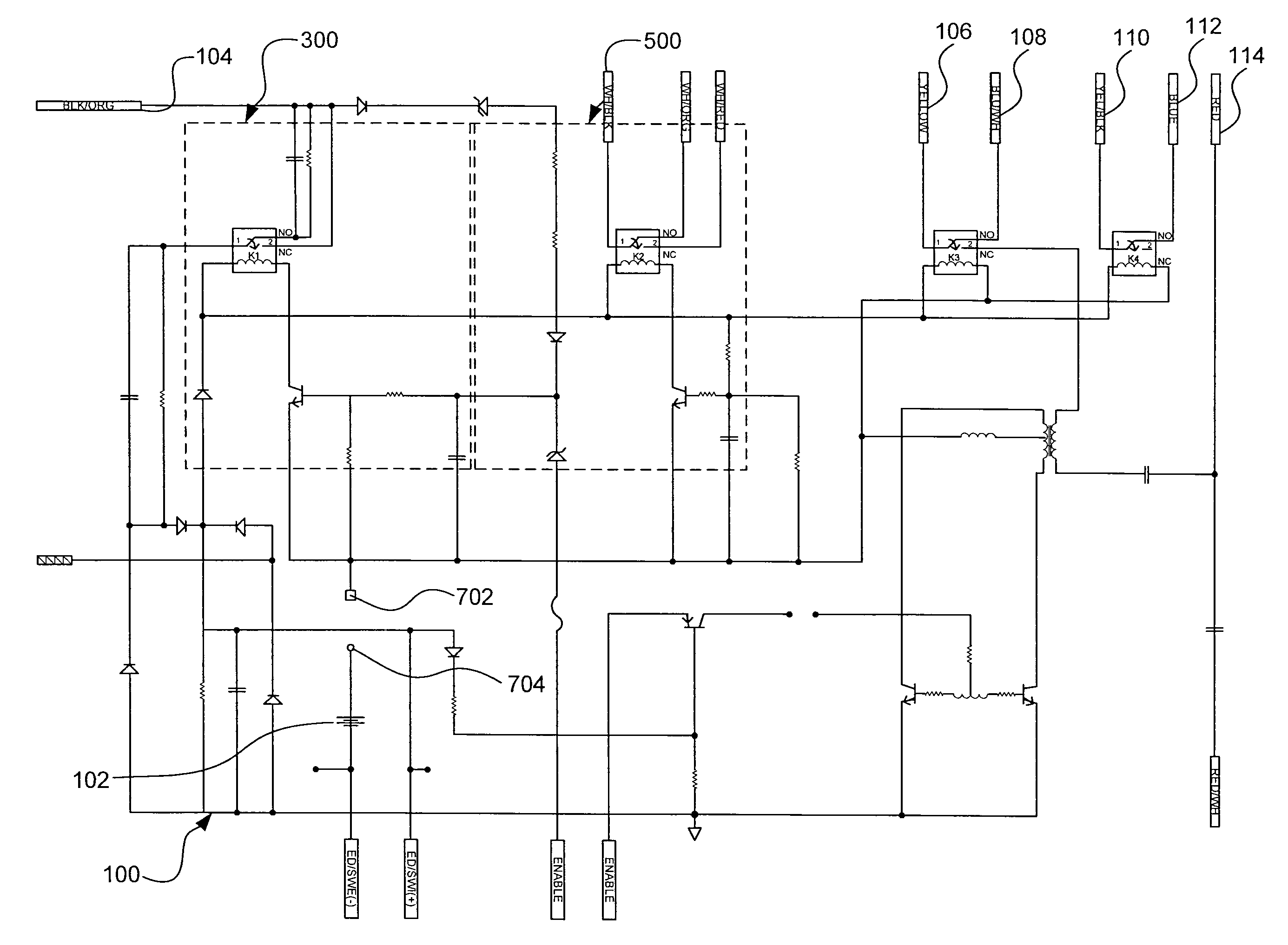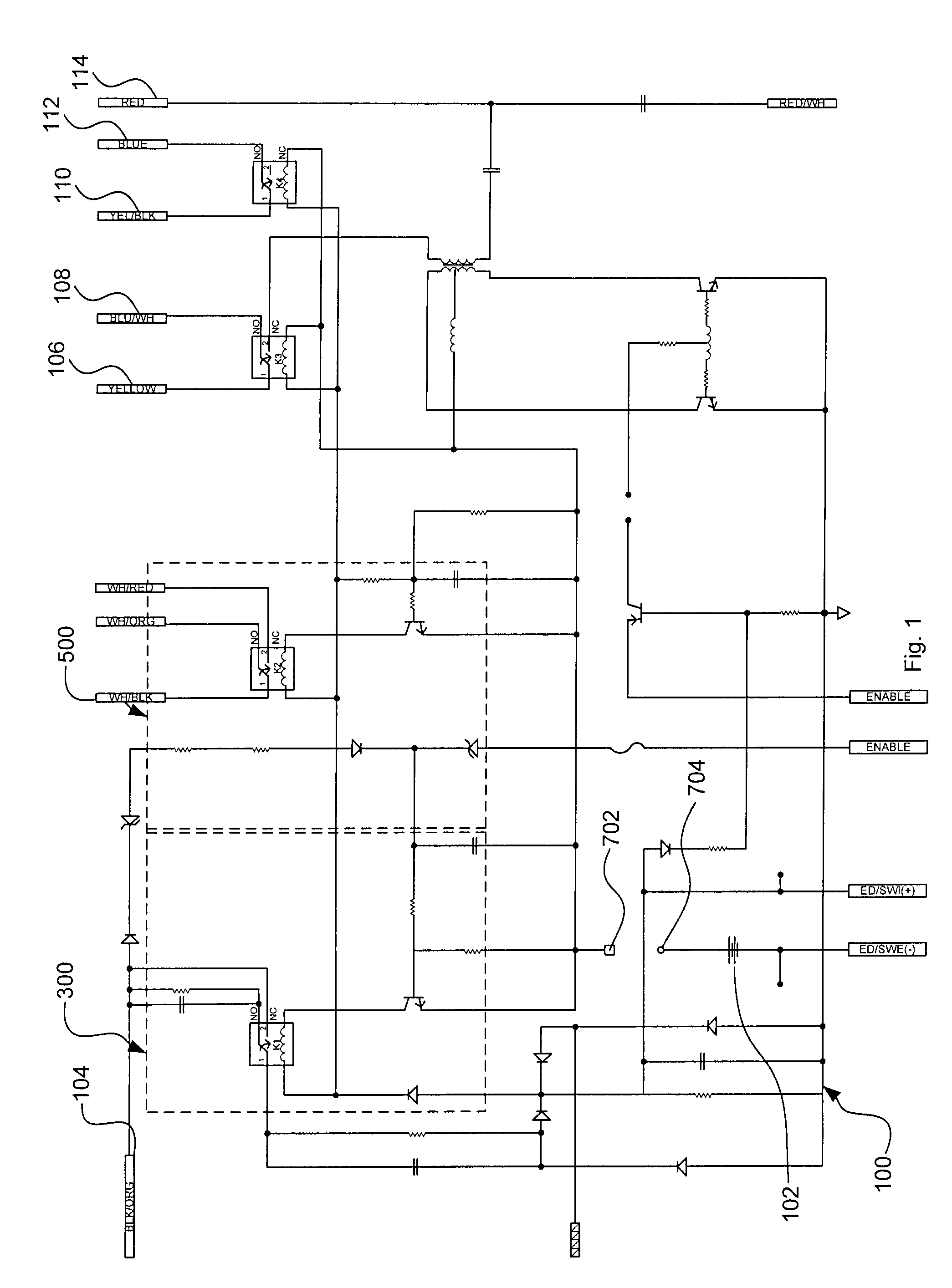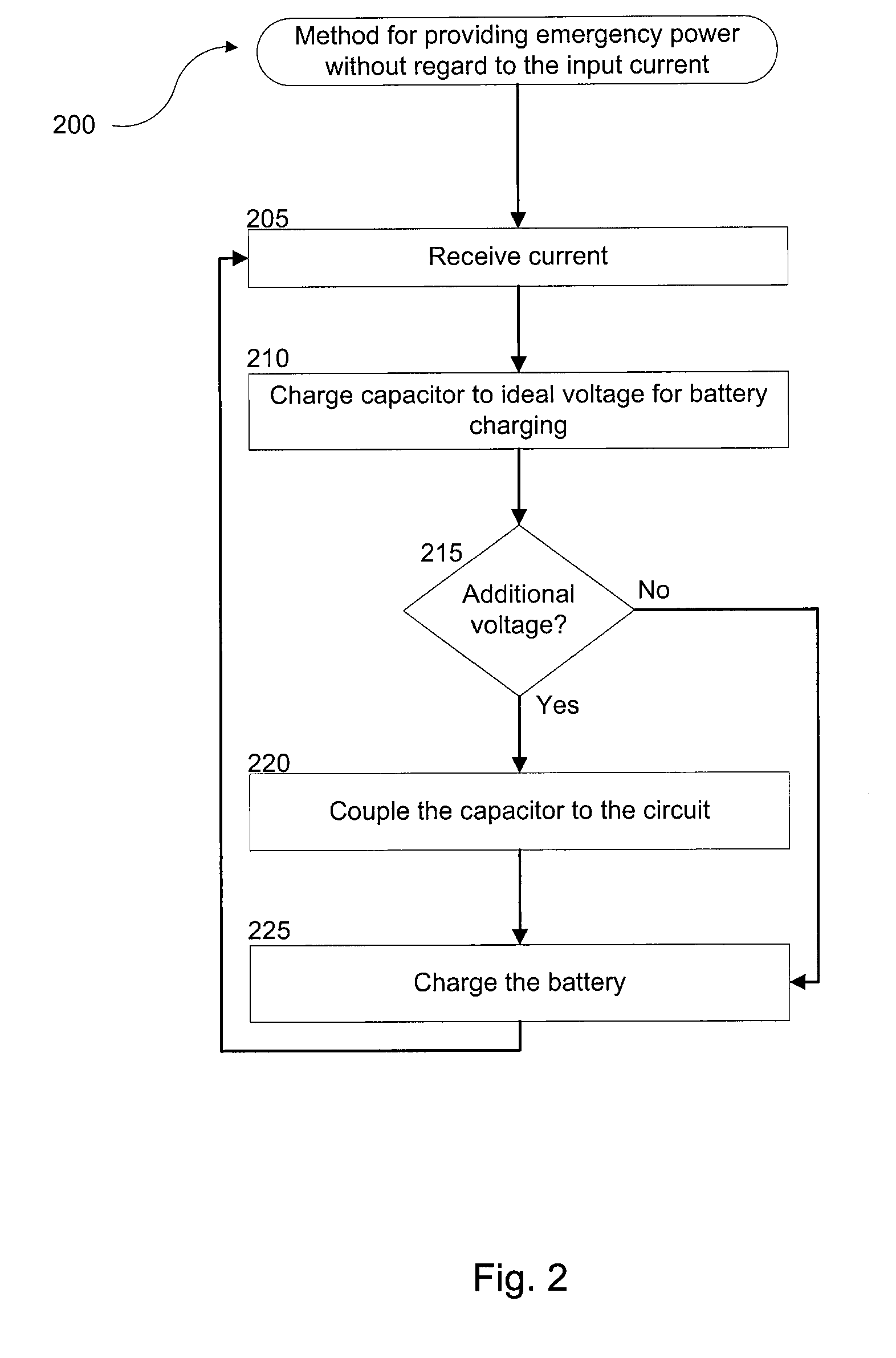Ballast For Fluorescent Emergency Lighting
a ballast and fluorescent technology, applied in emergency power supply arrangements, parallel/serial switching, transportation and packaging, etc., can solve the problems of not being able or convenient to determine the voltage of the light source, the feature is not cost-effective for emergency ballasts, and the system must be resolved
- Summary
- Abstract
- Description
- Claims
- Application Information
AI Technical Summary
Benefits of technology
Problems solved by technology
Method used
Image
Examples
Embodiment Construction
[0031]The present invention is directed to electrical lighting devices. In particular, certain exemplary embodiments of the invention are directed to an emergency fluorescent ballast that is installed in a fixture without regard to the amplitude of the current that is provided to the ballast. Certain other exemplary embodiments of the invention are directed to an emergency fluorescent ballast that uses more advanced battery technology, such as nickel metal hydride, as an emergency power supply. Yet other exemplary embodiments of the invention are directed to an emergency fluorescent ballast that prevents a standard ballast from improperly detecting an end-of-life open cathode condition in the lamp during the switchover from emergency operation to standard operation due to relay bounce.
[0032]The invention may be better understood by reading the following description of non-limiting, exemplary embodiments with reference to the attached drawings, wherein like or corresponding, but not ...
PUM
 Login to View More
Login to View More Abstract
Description
Claims
Application Information
 Login to View More
Login to View More - R&D
- Intellectual Property
- Life Sciences
- Materials
- Tech Scout
- Unparalleled Data Quality
- Higher Quality Content
- 60% Fewer Hallucinations
Browse by: Latest US Patents, China's latest patents, Technical Efficacy Thesaurus, Application Domain, Technology Topic, Popular Technical Reports.
© 2025 PatSnap. All rights reserved.Legal|Privacy policy|Modern Slavery Act Transparency Statement|Sitemap|About US| Contact US: help@patsnap.com



